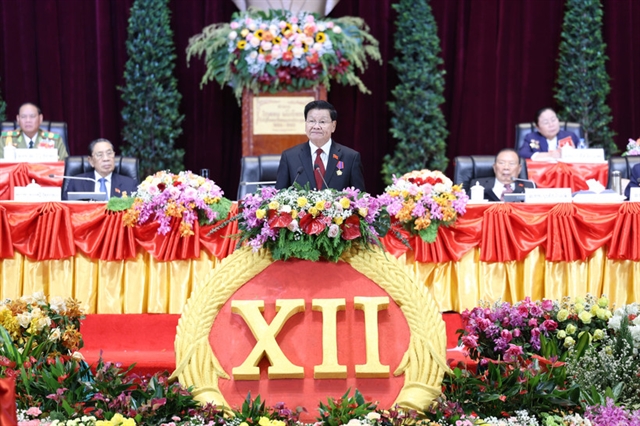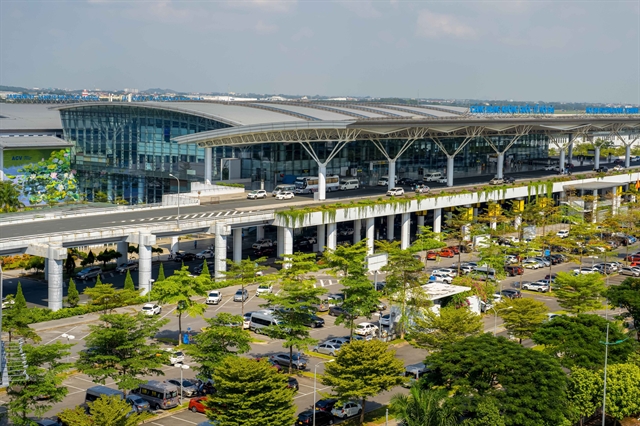 Economy
Economy

 |
| Nội Bài International Airport, Hà Nội. The capital and HCM City aim to become hubs for international transit in ASEAN by 2050. — VNA/VNS Photo |
HÀ NỘI — Việt Nam is expected to have two regional hubs for international air transit by 2050 - Hà Nội and HCM City, according to the national airport master plan announced by the Ministry of Transport last week.
Under the plan, Việt Nam would have 30 airports by 2030 and 33 by 2050 with Hà Nội and HCM City being the two major hubs.
By 2050, Cát Bi International Airport will be replaced by Hải Phòng International Airport, and three new domestic airports will be developed, including Cao Bằng, Cát Bi and Nam Hà Nội, bringing the total across the country to 33.
The Ministry of Transport said that 95 per cent of the population will be within 100km of an airport by 2030 and 97 per cent by 2050, higher than the current world average of 75 per cent and equivalent to other countries in the region.
The planning was highly open, the ministry said, adding that it allowed other potential local airports to be added when eligible.
The proposed list included 12 airports: Hà Giang in Bắc Quang District, Yên Bái in Yên Bái City, Tuyên Quang in Na Hang District, Gia Lâm in Hà Nội, Bắc Ninh in Gia Bình District, Hà Tĩnh in Cẩm Xuyên District, Kon Tum in Kon Plông District, Quảng Ngãi in Lý Sơn District, Bình Thuận in Phú Quý District, Khánh Hòa in Vạn Ninh District, Đăk Nông in Đăk Glong District and Tây Ninh in Dương Minh Châu District.
Director of the Civil Aviation Authority of Việt Nam (CAAV) Đinh Việt Thắng said that many localities want airport access to promote socio-economic development. However, ensuring efficient investment and operations is the most important factor in planning.
“Airports considered to be efficient and have resources for investment will be included in the planning while inefficient ones will be removed,” said Thắng.
Thắng said that the announcement of the airport planning also aimed to prevent rumours which could inflate real estate prices.
Deputy Minister of Transport Lê Anh Tuấn said that there were currently 22 airports throughout the country, which play an important role in ensuring national defence and security and promoting socio-economic development.
The transport ministry worked with the Ministry of National Defence and localities to review each airport and come up with a set of criteria to evaluate the demand and efficiency.
If localities have strong demand for an airport for socio-economic development, the transport ministry will report to the Government to adjust the plan, Tuấn said, adding that a project on raising capital for investing in airports was being completed to be proposed to the Prime Minister.
The planning set the target that by 2030, airports will handle around 276 million passengers, accounting for a 1.5 to 2 per cent share of the market worldwide, and handle 4.1 million tonnes of cargo, or 0.05 to 0.1 per cent of the global cargo transportation market.
Investment opportunities
Việt Nam has huge demand and potential for air transport development, thus, the airport planning will be based for attracting investment into this sector and paving the way for private investors to participate in developing aviation infrastructure.
It is estimated that Việt Nam will need around VNĐ420 trillion (US$17.8 billion) for airport development by 2023, which will be raised from the State budget and other sources.
Investing in aviation infrastructure is a difficult field, Phạm Ngọc Sáu from Sovico said, adding that it is necessary to develop a mechanism to attract private investment in airport development.
In the latest proposal for the project on raising capital for airport development, the CAAV noted that a public-private partnership (PPP) was proposed, in which the Government can decide its capital contribution to each project.
To date, five master plans of the transportation sector, including roads, railway networks, seaports, airports and inland waterways were approved, which will form the base of attractive projects to investors.
In 2021-30 period, there would be 14 international airports: Vân Đồn, Cát Bi, Nội Bài, Thọ Xuân, Vinh, Phú Bài, Đà Nẵng, Chu Lai, Cam Ranh, Liên Khương, Long Thành, Tân Sơn Nhất, Cần Thơ and Phú Quốc.
The will also be 16 domestic airports: Lai Châu, Điện Biên, Sa Pa, Nà Sản, Đồng Hới, Quảng Trị, Phù Cát, Tuy Hòa, Pleiku, Buôn Ma Thuột, Phan Thiết, Rạch Giá, Cà Mau, Côn Đảo, Thanh Sơn and Biên Hòa. — VNS




